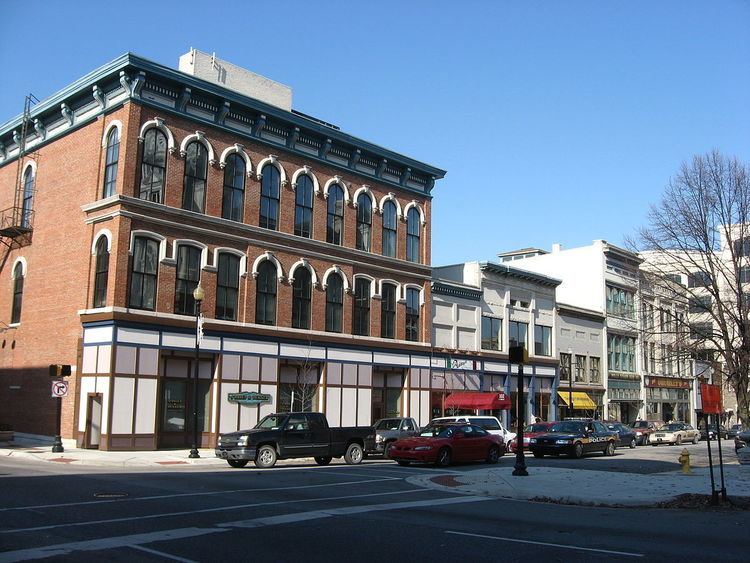Architect Multiple Area 8 ha Added to NRHP 28 November 1980 | NRHP Reference # 80000067 Year built 1825 | |
 | ||
Architectural style Second Empire, Italianate, Art Deco | ||
Downtown Lafayette Historic District is a national historic district located at Lafayette, Tippecanoe County, Indiana. Lafayette began in 1825 as a transportation center for the west central area of Indiana. Its development and growth reflects the changes in transportation over the intervening years. From its location along the Wabash River, it grew first with river travel then for a short while from the Wabash and Erie Canal. When the railroads arrived in the 1850s, the town began to grow, initially along the rail lines. The Downtown Lafayette Historic District reflects these early changes.
Contents
History
Lafayette was settled here, because of the nearness of the Wabash River. William Digby platted the town in 1825. The boundaries were the river on the west, Sixth Street on the east, with North Street and South Street creating the north and south edges. Development followed along with the advances in transportation.
The first period of expansion began with the construction of a log courthouse in 1829. The second priod of expansion began in 1843 with the arrival of the Wabash and Erie Canal, connecting the county with Toledo and markets on the east coast. The courthouse was replaced with a brick building and Fifth Street was widened to create an open market.
Within a decade, the railroads arrive din town and the third period of expansion began. The Lafayette & Indianapolis Railroad was the first railroad to arrive in Lafayette in 1852. In 1853, the New Albany and Salem Railroad, later called the Monon Railroad that arrived, following Fifth Street. The following year, 1854, the Wabash Line cut across the southeast corner of the city, crossing Main Street at Eleventh.
The railroads spurred the growth of the town by expanding its markets. Commercial structures such as the Hatcher Building, 1865; the Milwaukee Block, 1866; the Perrin Building, 1877; and many other buildings along Main Street reflect this period of growth.
